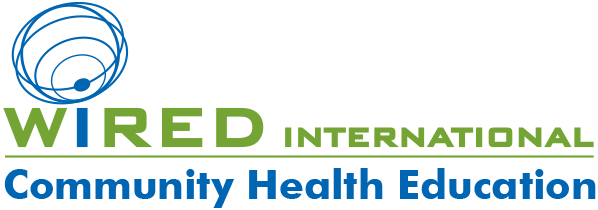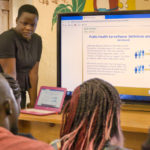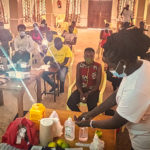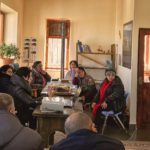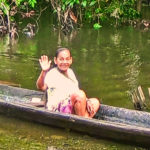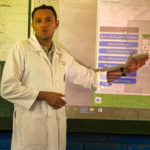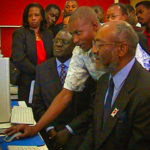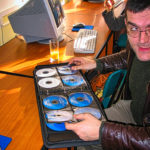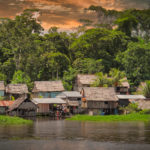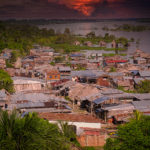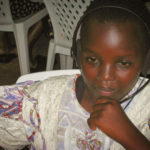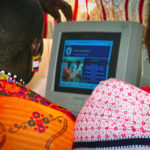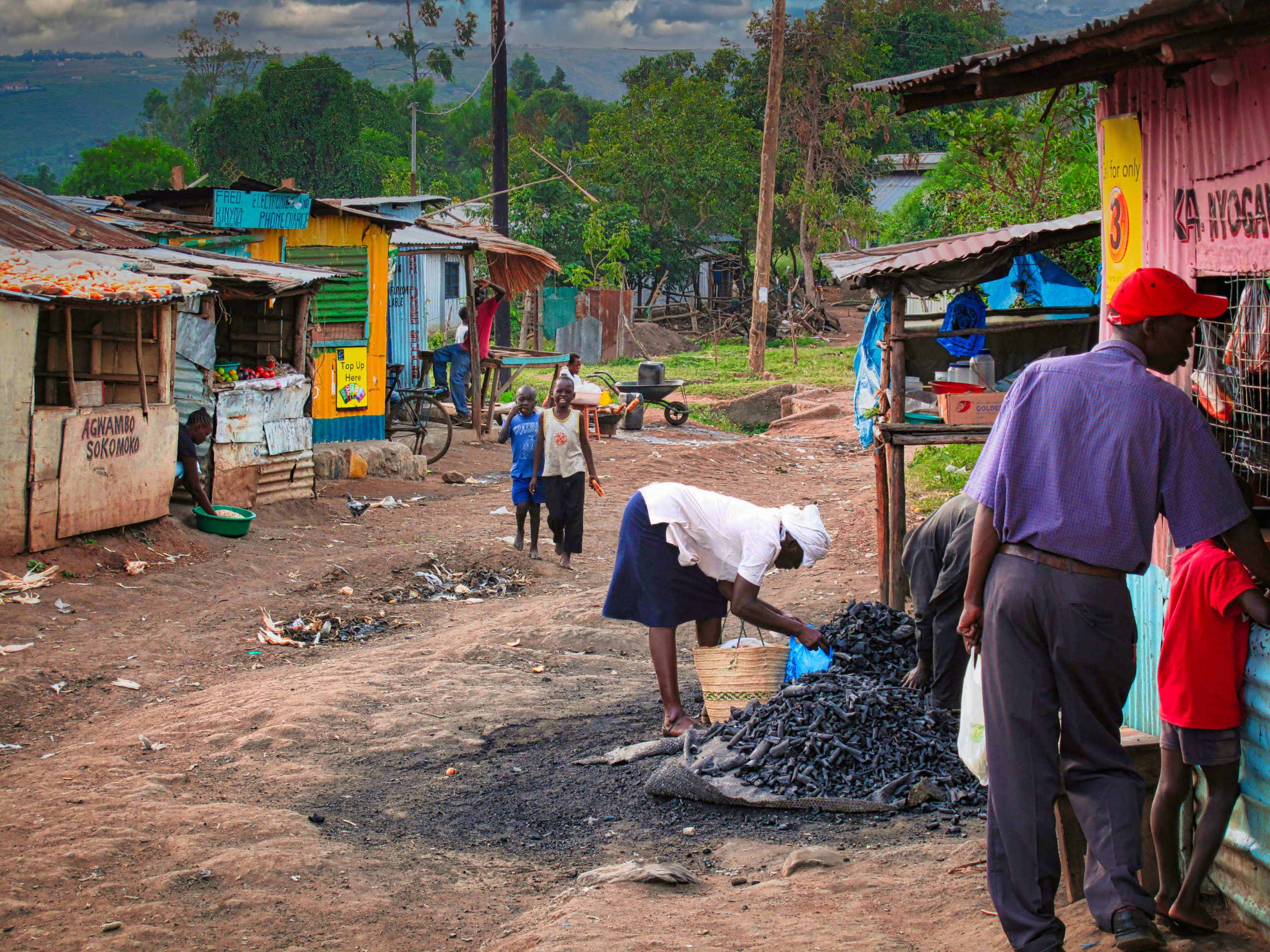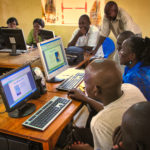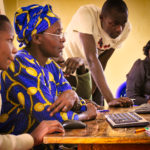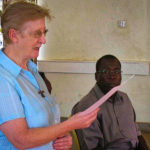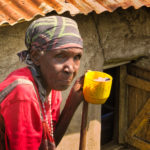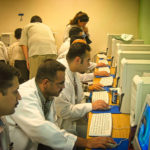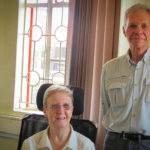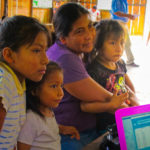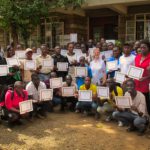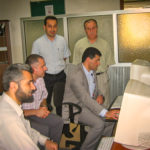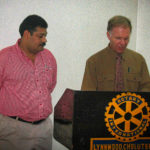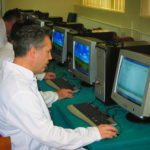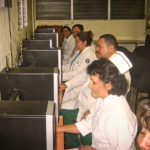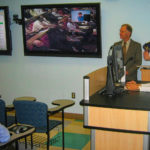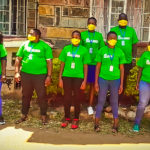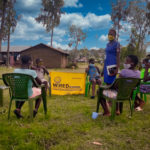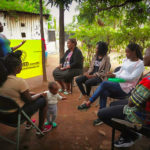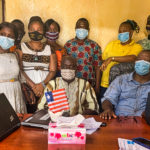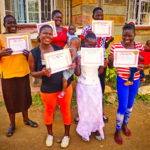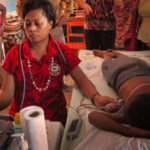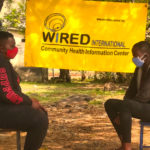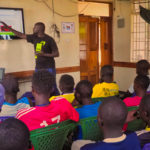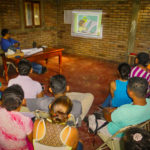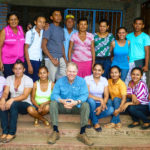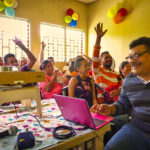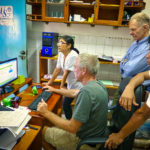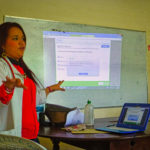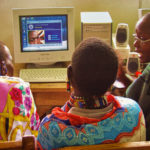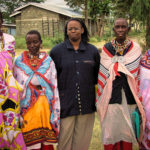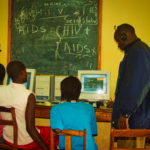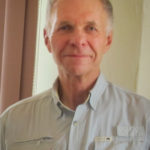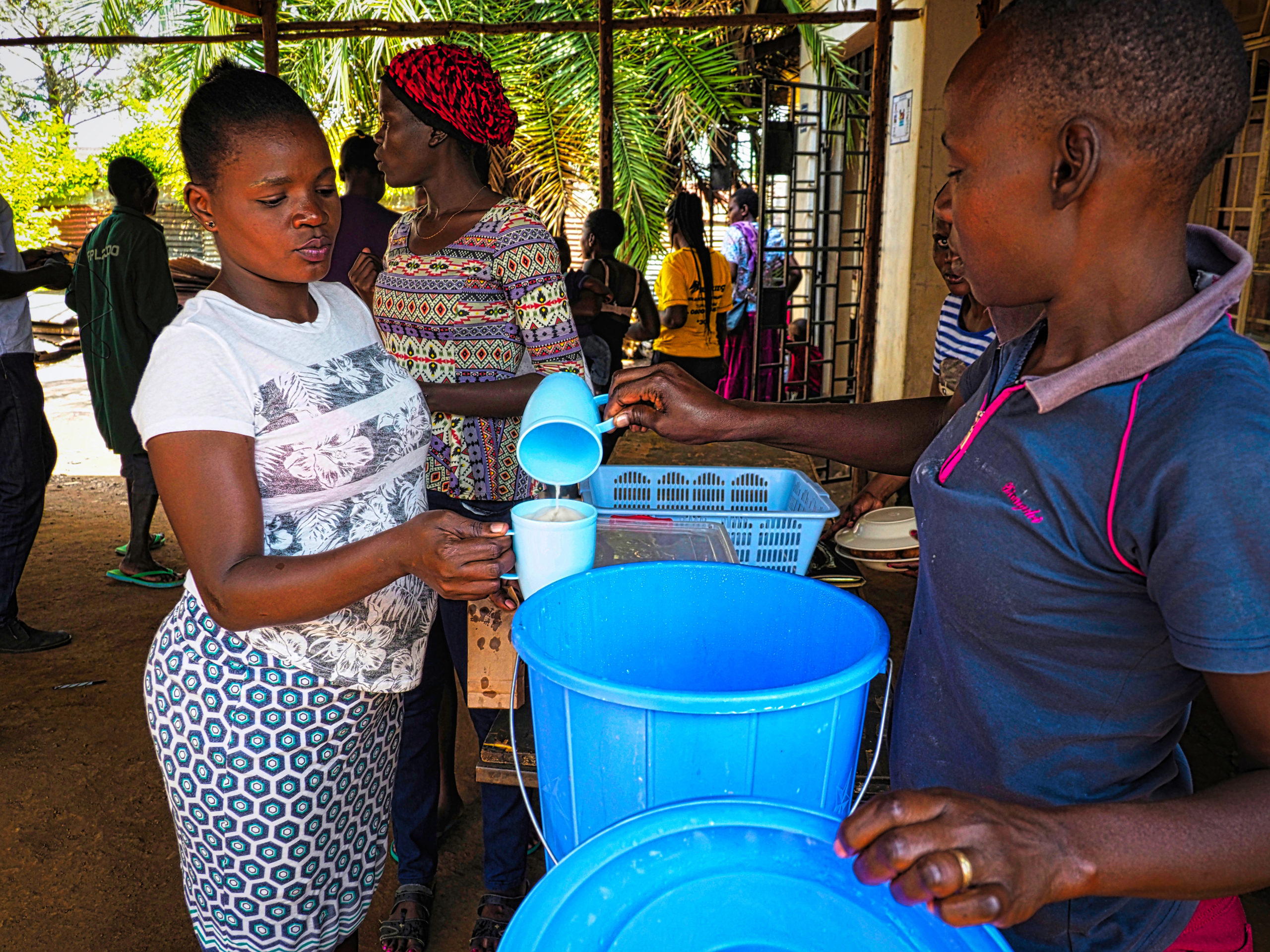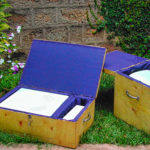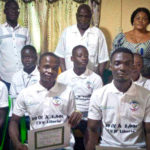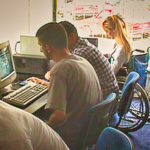Comment from WiRED’s Founder
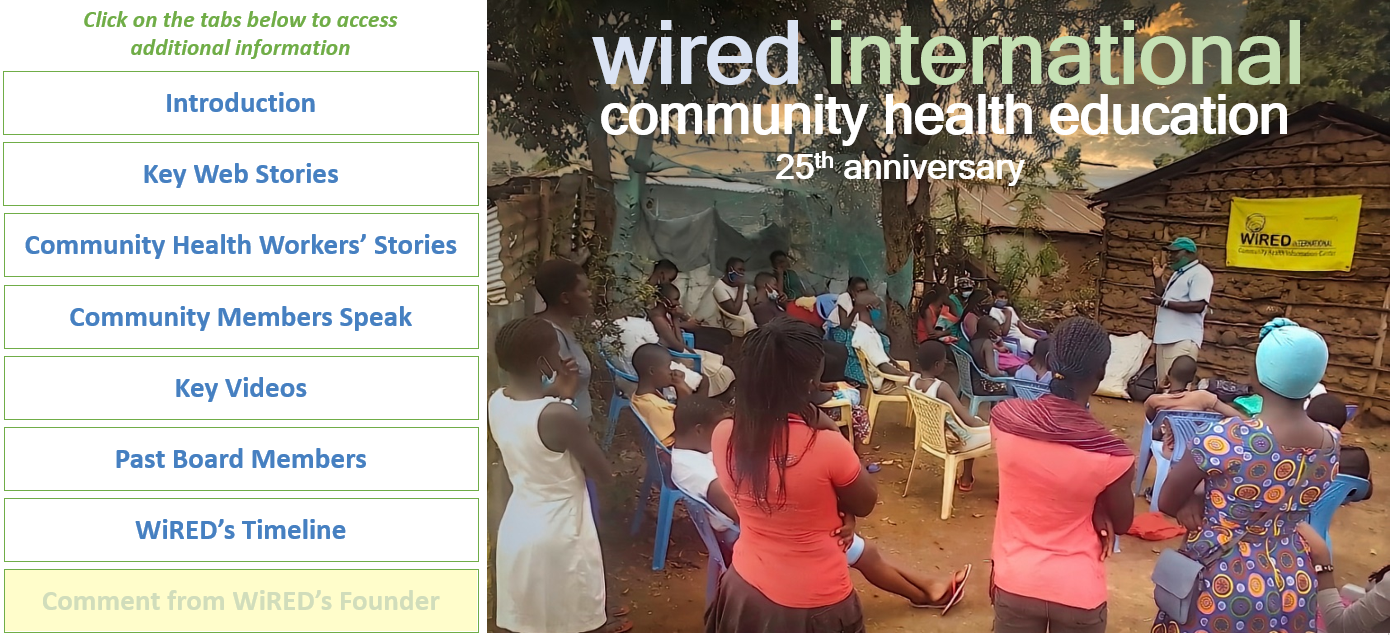
A Comment from Gary Selnow, Founder of WiRED International
I recall a brief conversation more than 20 years ago with a young man in Kenya who had HIV/AIDS. He said, “I would be alive today if a year ago I had access to the prevention information WiRED is now providing in my community.” HIV/AIDS was a death sentence then, and he saw himself as already dead. That haunting conversation is one of dozens that have motivated me over the years to get as many health training tools into as many hands as possible.
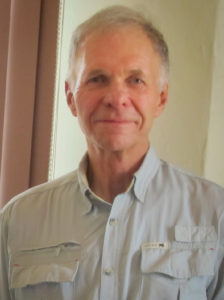 Twenty-five years ago, WiRED began with a simple request from the American embassy in Zagreb. War in the former Yugoslavia had ravaged each of the six breakaway countries, and eastern portions of Croatia were heavily affected. One town in particular, Vukovar, sitting on the edge of the Danube River, was battered by Serbian artillery and by a siege of troops who killed civilians by the hundreds.
Twenty-five years ago, WiRED began with a simple request from the American embassy in Zagreb. War in the former Yugoslavia had ravaged each of the six breakaway countries, and eastern portions of Croatia were heavily affected. One town in particular, Vukovar, sitting on the edge of the Danube River, was battered by Serbian artillery and by a siege of troops who killed civilians by the hundreds.
“How about going to Vukovar?” the embassy asked, “to see if you can help local people and especially teachers understand the new World Wide Web.” I was on leave from San Francisco State University and serving as a Fulbright professor at the time, teaching at the University of Zagreb. “Maybe,” the embassy official said, “the Internet could help these war-weary people reengage with the outside world.” Having just written a book on the Internet, I agreed to go and traveled four hours by rail then another hour over artillery-pocked roads to Vukovar.
That five-hour trip began a 25-year journey for WiRED. We tell that story in real time articles stocked on this website. Thousands of stories, media pieces and videos describe WiRED’s progress from Vukovar to the rest of the Balkans, to South and Central America, to Africa and Eurasia. The stories describe WiRED’s work in war zones, isolated villages off the grid, communities devastated by poverty, hunger and disease. They tell how this small, nonprofit drew on the talents of dedicated volunteers to create content and to develop delivery mechanisms that provide training programs directly to populations too often overlooked by governments and other NGOs.
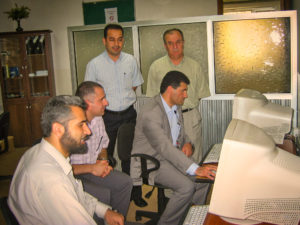 The accounts describe how WiRED, based in San Francisco, grew our health training programs simultaneously and in sync with rapidly evolving communication technologies. In just a few years, the electronic delivery of information removed geographic barriers faced by print, and physical media, such as CD-ROMs and thumb drives, and allowed us to offer health training tools to increasingly distant and challenging environments. Consider this sequence:
The accounts describe how WiRED, based in San Francisco, grew our health training programs simultaneously and in sync with rapidly evolving communication technologies. In just a few years, the electronic delivery of information removed geographic barriers faced by print, and physical media, such as CD-ROMs and thumb drives, and allowed us to offer health training tools to increasingly distant and challenging environments. Consider this sequence:
Our first distribution model involved physical media, starting with the delivery of our health library by way of CD-ROMS. Then flash drives became available, and we quickly adopted them as vehicles for our training programs. The large storage capacity of small flash drives allowed us to reduce hundreds of pounds of CD plastic to devices that fit in a pocket and weigh practically nothing. But, flash drives still require physical transportation; someone had to get on a plane and hand carry the drives into the field.
As Internet connections proliferated globally and underserved communities gained access to these evolving resources, WiRED established a website for the delivery of our modules. This allowed users to select training modules on any health topic. Access online was a vast improvement over physical media because it was global, fast and easy and didn’t require someone carrying CDs or flash drives.
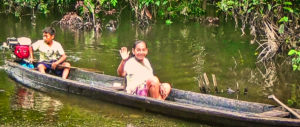 Still, website access posed real problems for people who used our training material. Users needed steady, reliable Internet connections, which were not available in most places. They required computer equipment that few people could afford. They required basic computer skills that many did not have.
Still, website access posed real problems for people who used our training material. Users needed steady, reliable Internet connections, which were not available in most places. They required computer equipment that few people could afford. They required basic computer skills that many did not have.
By 2022, in our 25th year, advances in technology and the widespread public adoption of sophisticated smartphones and tablets, even in many low-resource regions, have allowed WiRED to shrink the distance from faraway places and offer a wide variety of training programs. WiRED’s current Community Health Worker (CHW) training programs make use of the latest generation of Internet communication features that enable module downloading and easy program sharing. Moreover, they allow us to launch a sophisticated continuing medical education (CME) program that makes it possible for CHWs, nurses and other health workers to maintain their knowledge and advance their skills.
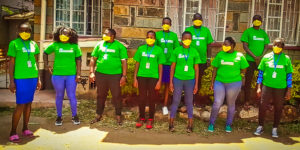 A word about WiRED’s leading programs going into our 26th year: Community Health Workers and Continuing Medical Education.
A word about WiRED’s leading programs going into our 26th year: Community Health Workers and Continuing Medical Education.
Community Health Workers
In most low- and middle-resource countries, there is an inadequate number of physicians and nurses to address population needs. Surveys conducted by the World Organization (WHO), the World Bank, the Pan American Health Organization and others reveal that low-income countries have from a third to a tenth the number of physicians and nurses as high-income countries. This disparity in numbers of physicians and nurses between rich and poor countries is striking, and the measures are reasonably consistent across regions.
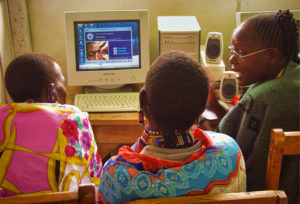 There is little hope of increasing the number of medical professionals within the next several decades, a fact openly recognized by WHO, which has long advocated for the cultivation of CHWs, a paraprofessional corps to fill the gap, not as substitutes but as supplements for physicians. WHO identifies CHWs as healthcare providers who live in the community they serve and have enormous potential to extend healthcare services to vulnerable populations living in remote regions with historically marginalized people. CHWs provide “unmet health needs in a culturally appropriate manner, improve access to services, address inequities in health status and improve health system performance and efficiency.”
There is little hope of increasing the number of medical professionals within the next several decades, a fact openly recognized by WHO, which has long advocated for the cultivation of CHWs, a paraprofessional corps to fill the gap, not as substitutes but as supplements for physicians. WHO identifies CHWs as healthcare providers who live in the community they serve and have enormous potential to extend healthcare services to vulnerable populations living in remote regions with historically marginalized people. CHWs provide “unmet health needs in a culturally appropriate manner, improve access to services, address inequities in health status and improve health system performance and efficiency.”
CHW Preparation
In practice, CHW services are wide and varied and differ significantly from place to place. Some CHWs receive merely an hour of training focusing on specific activities, such as survey data collection or task-specific, physician assistance. Others go through more rigorous and comprehensive training in classes that run for weeks and months. The term CHWs gives an impression of standard training and practice — like scaled-down university-educated medical professionals — but, CHW becomes a catch-all label for people who, as we stated earlier, fill gaps in the health system. In low- and middle-income regions, CHWs offer a constellation of health services as needed to accommodate communities deprived of adequate medical and health resources.
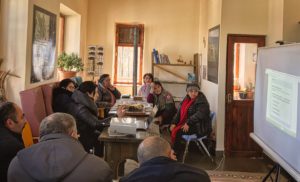 Among the better-trained corps, CHWs provide basic clinical services and referrals to higher levels of care, disease prevention training, mother and child health monitoring, health advocacy, medication management and health surveillance. Serving as critical links within the healthcare system, they bring information from official medical agencies to local communities and from those communities back to the official medical agencies. During the COVID-19 pandemic, we saw WiRED-trained CHWs fill an even more expanded role as they stepped in to provide scaled-up prevention and treatment services to accommodate ailing communities facing pandemic-diminished numbers of medical professionals.
Among the better-trained corps, CHWs provide basic clinical services and referrals to higher levels of care, disease prevention training, mother and child health monitoring, health advocacy, medication management and health surveillance. Serving as critical links within the healthcare system, they bring information from official medical agencies to local communities and from those communities back to the official medical agencies. During the COVID-19 pandemic, we saw WiRED-trained CHWs fill an even more expanded role as they stepped in to provide scaled-up prevention and treatment services to accommodate ailing communities facing pandemic-diminished numbers of medical professionals.
A CHW Training Program
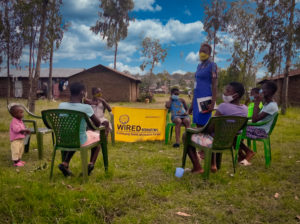 With guidance from a panel of 12 physicians and nursing professors, WiRED developed an extensive WHO-compliant, CHW curriculum comprising 26 modules that can be downloaded to phones and tablets. Local physicians and nurses teach the 150-hour training course in classrooms and clinical settings. The course, which has been tested successfully in Kenya, Honduras, Peru and India, includes:
With guidance from a panel of 12 physicians and nursing professors, WiRED developed an extensive WHO-compliant, CHW curriculum comprising 26 modules that can be downloaded to phones and tablets. Local physicians and nurses teach the 150-hour training course in classrooms and clinical settings. The course, which has been tested successfully in Kenya, Honduras, Peru and India, includes:
- Basic health issues. Anatomy and physiology; infectious diseases prevention and control; non-communicable diseases, causes and prevention; health promotion; mental health
- Clinical issues. Vital signs and basic assessment; first aid and assessment; medications management; patient assessment
- Health communications. Communication skills; teaching health topics; health surveillance skills
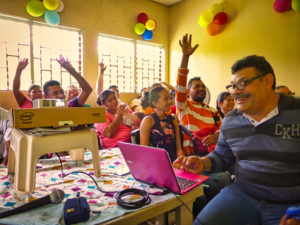 A daunting challenge for CHW training courses is how to provide a standard curriculum covering universal health topics while adapting the course to local differences in health conditions, cultural norms, government requirements, resource availability and other qualities that distinguish local communities. The WiRED curriculum addresses universal medical and health topics through its standard curriculum, and it affects localized CHW training in two ways.
A daunting challenge for CHW training courses is how to provide a standard curriculum covering universal health topics while adapting the course to local differences in health conditions, cultural norms, government requirements, resource availability and other qualities that distinguish local communities. The WiRED curriculum addresses universal medical and health topics through its standard curriculum, and it affects localized CHW training in two ways.
First, after going through a brief train-the-trainer program with WiRED, local medical professionals teach the CHW course. Working through the modules, the instructors bring the lessons to the local level in their CHW classrooms. For instance, in discussions of infectious diseases, the local doctors reference illnesses common in that community and address effective local treatments. Further, they describe local protocols for referrals, discuss higher-level treatment facilities and detail other resources CHWs will need in their field activities. So, the instructors present the academic material from the modules while casting the lessons in a local frame. Local doctors and nurses thus teach local CHWs.
Continuing Medical Education.
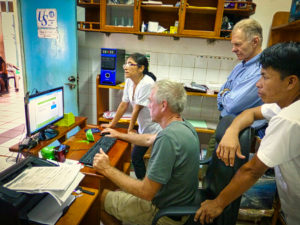 The second way we localize CHW training is through a CME program. After CHWs earn their certificates, they are automatically enrolled in an online CME platform that offers hundreds of modules related to health and medicine. The program is available through a smartphone/tablet app that enables CHWs to browse the topics alphabetically or by topic category. Users choose and download as many modules as they wish, study them offline and freely share them with others. This helps localize training by allowing CHWs to select the topics of greatest relevance to their communities.
The second way we localize CHW training is through a CME program. After CHWs earn their certificates, they are automatically enrolled in an online CME platform that offers hundreds of modules related to health and medicine. The program is available through a smartphone/tablet app that enables CHWs to browse the topics alphabetically or by topic category. Users choose and download as many modules as they wish, study them offline and freely share them with others. This helps localize training by allowing CHWs to select the topics of greatest relevance to their communities.
One connective thread runs through all our programs from the early days to this our 25th year: the use of technology to deliver health training and involve local health professionals to make that information available and relevant to local populations. The resulting programs have touched millions of people, and we are convinced that the CHW program has a huge potential to improve the health of communities in overlooked regions.
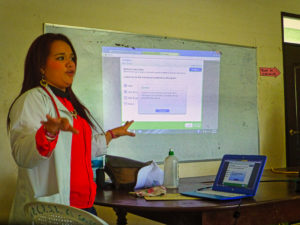 Personal Observations.
Personal Observations.
It’s always tempting to mull the lessons learned at the end of a landmark year. On this, our 25th, anniversary, I will yield to that temptation and offer thoughts about two groups:
Volunteers: Twenty-five years ago, at the start of this journey, I didn’t think an organization reaching out to populations around the world could succeed with volunteers. I was wrong. WiRED has never paid an administrative staff, fund raisers, public relations people, program field operators or others who perform tasks necessary to create, package and deliver training programs. For a brief period several years ago, we provided a stipend to a medical writer and editor who helped organize content development; she now volunteers. We provide a small stipend to a computer tech who contributes part-time to our website.
Volunteers have stepped up to contribute their skills, each for his or her own reasons. Most recognize the importance of health education in under-resourced regions. WiRED has never charged recipients for access to our programs, and that fact has touched many volunteers who are eager to continue this cost-free supply of health information. I don’t ask people why they volunteer, but I assume that for some it’s based on their faith, for others it’s a repayment for a time in their lives when they benefitted from a helping hand. Others probably help because they like joining a team effort where other people are similarly motivated to offer their skills for a good cause.
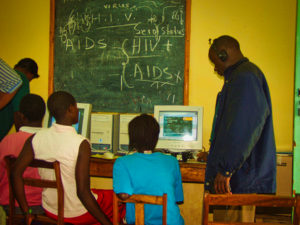 I take off my hat to people who embrace the volunteer spirit and give their time and talents to assist people on the other side of the world, people they likely will never meet. One volunteer, for example, just spent countless hours contributing to the translation of our entire CHW curriculum into the French language for an upcoming training program in Congo. A volunteer physician donated untold hours to arrange for the creation of a first aid field guide. A retired legal secretary organized and summarize hundreds of web stories. A professional writer and editor drafted, edited and arranged articles to record WiRED’s activities and tell WiRED’s story over time. Seven volunteers contributed to the production of this 25th anniversary collection. I don’t know what motivates these people, but I am inspired by their generous spirit and their belief in the mission of this organization. Maybe Winston Churchill nailed it for our volunteers when he said, “You make a living by what you get. You make a life by what you give.”
I take off my hat to people who embrace the volunteer spirit and give their time and talents to assist people on the other side of the world, people they likely will never meet. One volunteer, for example, just spent countless hours contributing to the translation of our entire CHW curriculum into the French language for an upcoming training program in Congo. A volunteer physician donated untold hours to arrange for the creation of a first aid field guide. A retired legal secretary organized and summarize hundreds of web stories. A professional writer and editor drafted, edited and arranged articles to record WiRED’s activities and tell WiRED’s story over time. Seven volunteers contributed to the production of this 25th anniversary collection. I don’t know what motivates these people, but I am inspired by their generous spirit and their belief in the mission of this organization. Maybe Winston Churchill nailed it for our volunteers when he said, “You make a living by what you get. You make a life by what you give.”
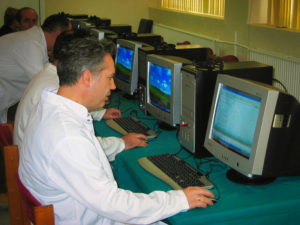 I encourage you to read the statement below from Gray Maganga, a Volunteer from Kenya, who
I encourage you to read the statement below from Gray Maganga, a Volunteer from Kenya, who
has been with WiRED for nearly two decades and is now at Harvard University.
Donors: At the start of this project two and a half decades ago, I had no idea how we would fund our work. I had never run a nonprofit and had no idea how they got money. Our first donors were two early board members who offered to write checks. I joined them in this first fundraiser, and the three of us provided a small pool of cash to get the organization underway.
Since those early days, WiRED has received grants from the U.S. Department of State, the U.S. National Institutes of Health, the Medtronic Foundation, The Christopher and Dana Reeve Foundation and several other large and well-known funders. Most of our operating cash over the years, however, has come from many ordinary people who have sent in small donations to become part of this work. A number of people donate every year as they follow our work and track our efforts and outcomes.
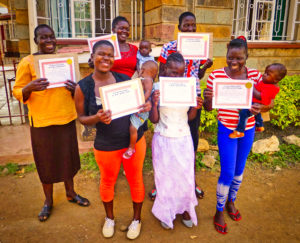 I see donations from small donors as a kind of vote for our work. Checks and PayPal donations from ordinary people confirm that they value our work enough to contribute their hard-earned money to continue it. Many donations represent many votes of confidence. People carefully track our work and approve of what we do. They know we will spend their money wisely. Over more than two and a half decades, I have come to value the people who support this work. They confirm for all of us at WiRED that the work we are doing has merit not only to the recipients of our work but to people who want to see it continue and become part of this mission.
I see donations from small donors as a kind of vote for our work. Checks and PayPal donations from ordinary people confirm that they value our work enough to contribute their hard-earned money to continue it. Many donations represent many votes of confidence. People carefully track our work and approve of what we do. They know we will spend their money wisely. Over more than two and a half decades, I have come to value the people who support this work. They confirm for all of us at WiRED that the work we are doing has merit not only to the recipients of our work but to people who want to see it continue and become part of this mission.
